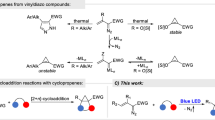Abstract
THE remarkable insecticidal powers of the compound D.D.T. (alpha alpha bis-(4-chlorphenyl)-beta beta beta trichlorethane) have attracted some attention for their theoretical interest as well as for their practical utilization. Two quite independent hypotheses concerning its outstanding toxicity have been published so far. They are alike in ascribing it to a combination of a toxic component of the molecule with a grouping conferring lipoid solubility; but there they part company. Dr. Läuger1 and his colleagues believe that the toxic component is the linked p-chlorbenzene rings, on the grounds that they have found several compounds of this type toxic to insects when ingested.
This is a preview of subscription content, access via your institution
Access options
Subscribe to this journal
Receive 51 print issues and online access
$199.00 per year
only $3.90 per issue
Buy this article
- Purchase on Springer Link
- Instant access to full article PDF
Prices may be subject to local taxes which are calculated during checkout
Similar content being viewed by others
References
Läuger, P., Martin, H., and Müller, P., Helv. Acta Chem., 27, 892 (1944).
Martin, H., and Wain, R. L., Nature, 154, 512 (1944).
Potter, C., Ann. Appl. Biol., 28, 142 (1941).
Ferguson, J., Proc. Roy. Soc., B, 127, 387 (1939).
Author information
Authors and Affiliations
Rights and permissions
About this article
Cite this article
BUSVINE, J. Insecticidal Action of D.D.T.. Nature 156, 169–170 (1945). https://doi.org/10.1038/156169a0
Issue Date:
DOI: https://doi.org/10.1038/156169a0
This article is cited by
-
Die Chemie der Insektizide, ihre Entwicklung und ihr heutiger Stand
Experientia (1954)
-
Zur Chemotherapie Der Rickettsiosen
Klinische Wochenschrift (1950)
Comments
By submitting a comment you agree to abide by our Terms and Community Guidelines. If you find something abusive or that does not comply with our terms or guidelines please flag it as inappropriate.



